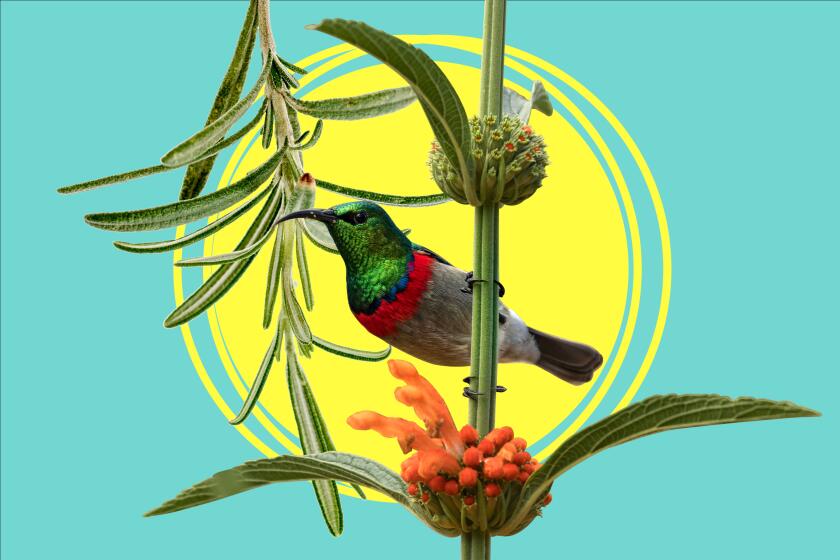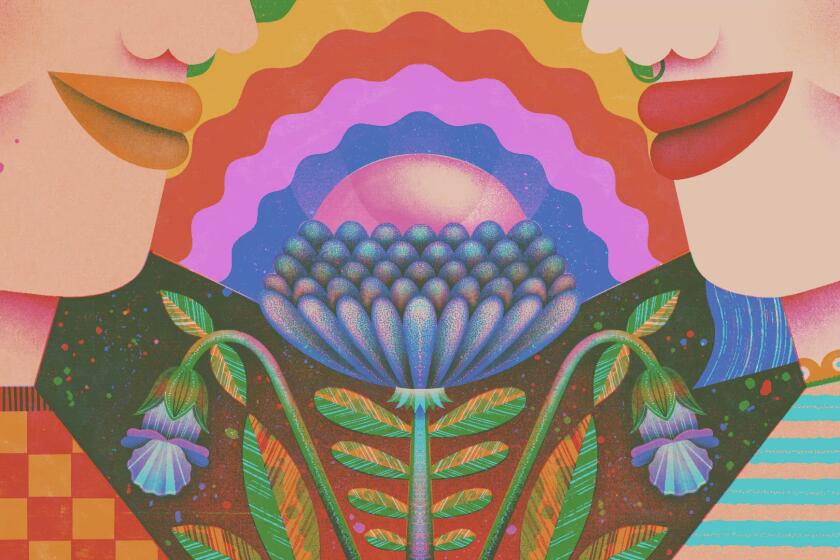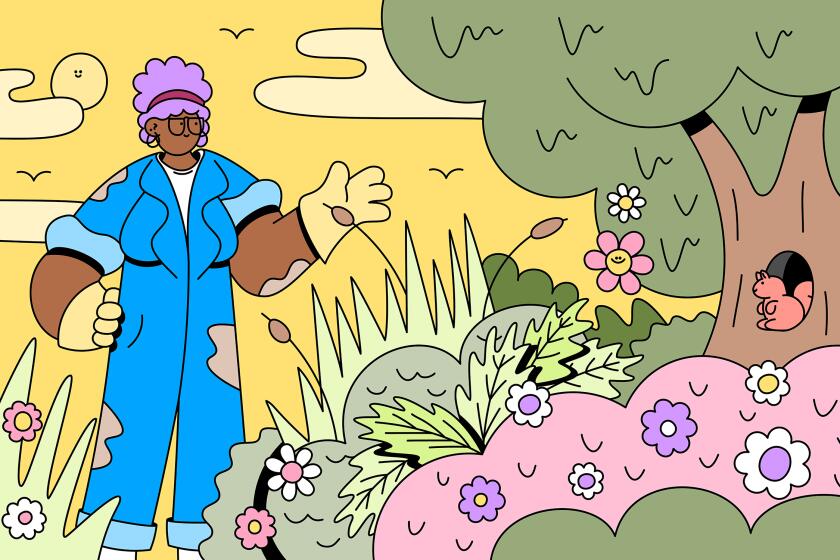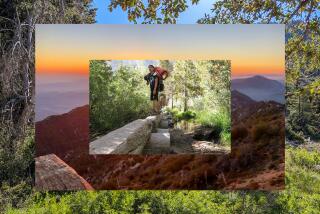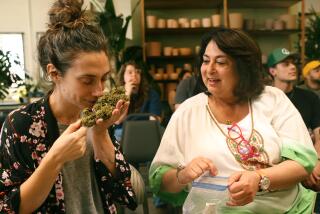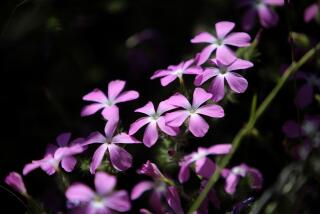Want glorious spring wildflowers? Here’s what you should scatter right now
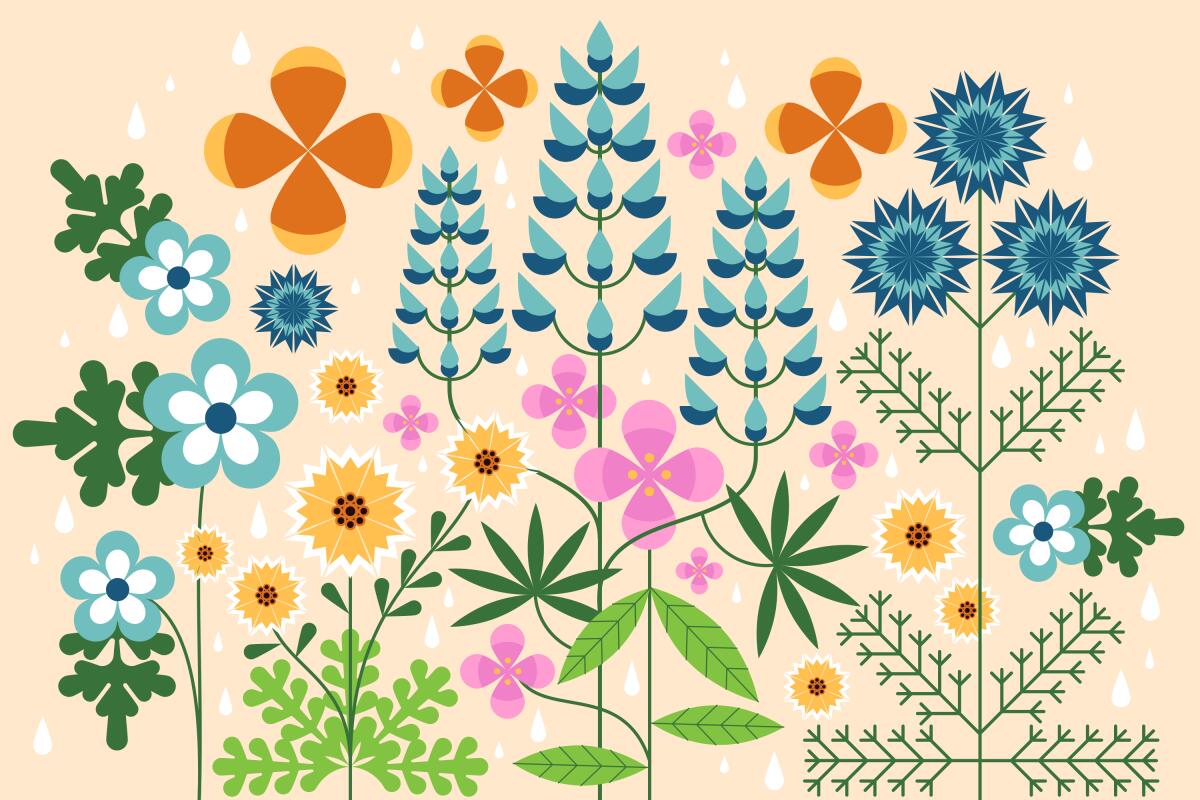
Love it or hate it, SoCal’s ongoing deluge likely will fuel one silver lining come spring: a massive wildflower bloom in our hills and deserts. And more good news: It’s not too late to create a superbloom in your yard — or even a patio box — if you plant as soon as you can in January, says Tim Becker, wildflower expert and director of horticulture at the Theodore Payne Foundation.
Typically, the best time to plant wildflower seeds is in November and early December, Becker said, so the seeds can benefit from winter rains and have time to grow tall, sturdy plants. Wildflowers need moist conditions to germinate and grow, pushing their roots deep into the soil to follow the moisture underground. But with all the rain we’ve gotten in January, there’s still time to scatter wildflower seeds in your yard and get good results, he said.
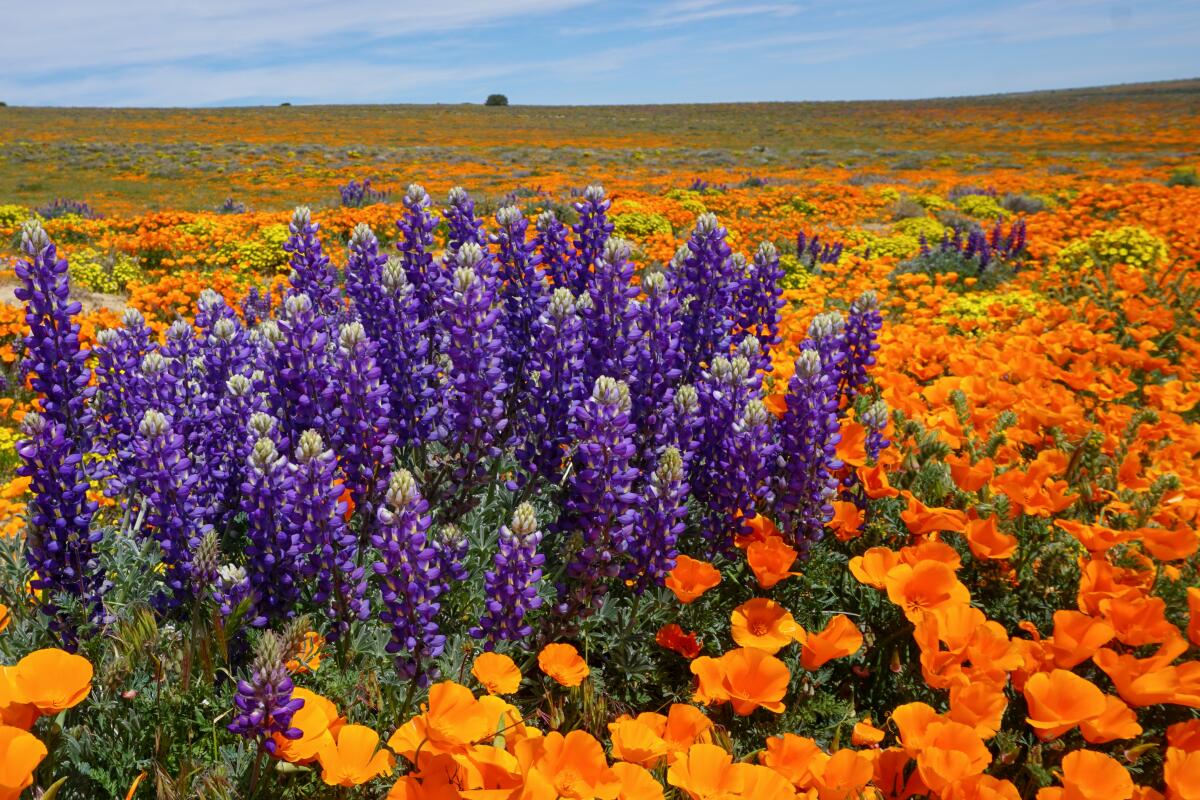
Another bonus: Wildflowers are self-seeding, so once you get a good bloom and let them go to seed, they’ll pretty much take care of themselves after that, said Becker, who often mixes seeds for edible spicy mustard greens, lettuce, arugula, cilantro and other greens into his personal wildflower mix so he can forage for food among his flowers.
If you let the greens go to seed, they’ll reseed along with the wildflowers, he said. But be aware you might have to do some thinning. “When you let your wildflowers and greens grow everywhere, you’ll have lettuce and poppies coming out of the cracks in your driveway.”
At some point, you might have to weed out your reseeding plants if they grow in areas where you don’t want them, but they’re fairly easy to manage, Becker said. Remember, we’re talking wildflowers, right? So if you want to shake the stuffiness out of your landscape, here are Becker’s tips for how to get started:
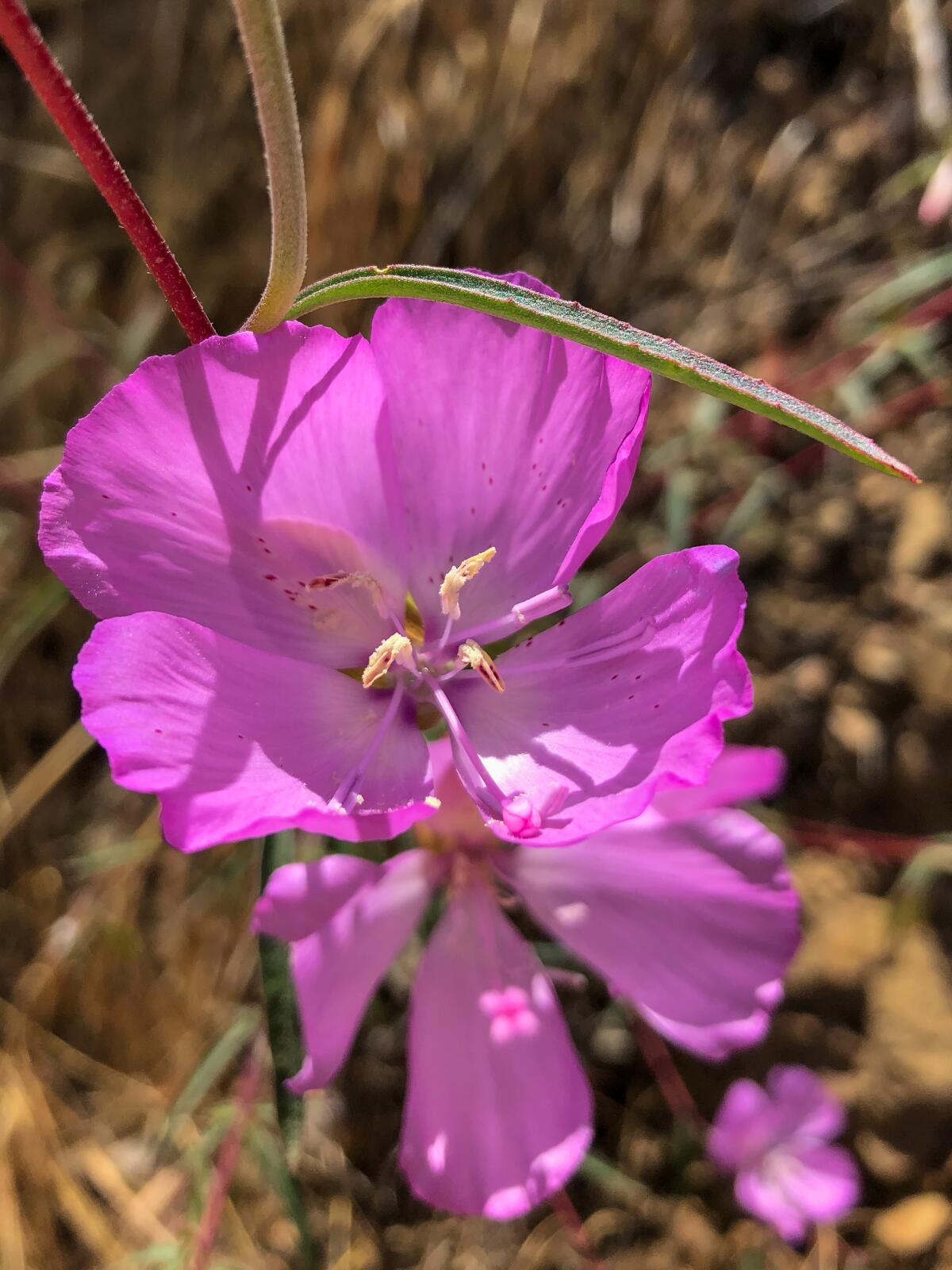
1. Get some good seed
Most nurseries sell wildflower mixes, but if you’re interested in building habitat and discouraging invasive species like African daisy, aim for mixes or seeds that are native to California to help local insects and birds. This time of year, some wildflower mixes may be sold out, but the region’s two premier native plant nurseries — Tree of Life Nursery near San Juan Capistrano and Theodore Payne Foundation in Sun Valley — offer seed mixes and packets for individual flowers you can buy at their stores or order online. Becker said other good online sources for California wildflower seeds include Mojave Desert Land Trust in Joshua Tree, Larner Seeds in Marin County, Seedhunt in central California and Sierra Seed Supply in Plumas County in northeast California.
For the record:
10:14 a.m. Jan. 13, 2023A photo caption previously misidentified the Gilia tricolor flower as Nemophila, or baby blue eyes. The caption has been corrected.
Note that you can purchase up to a pound of seed mixes from Theodore Payne, depending on the size of ground you want to cover. And AltadenaMaid sells California wildflower seed balls and seed bark online and at local farmer’s markets.
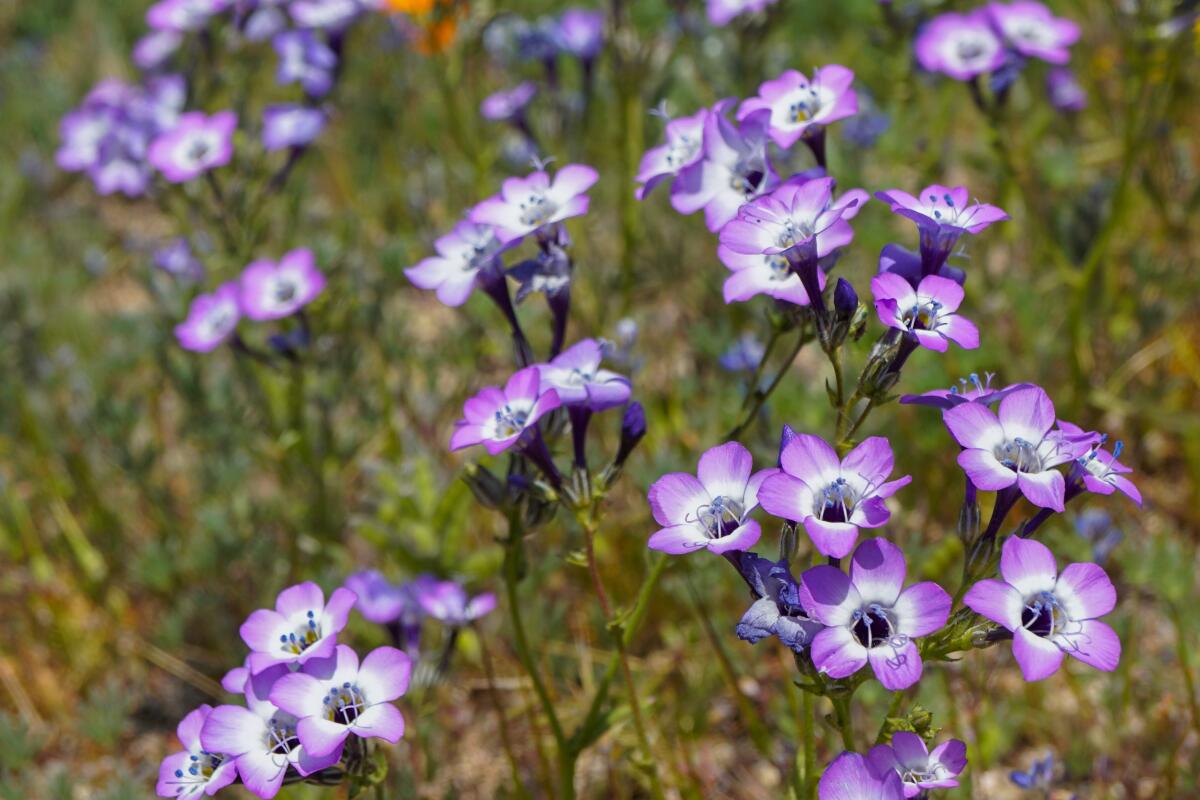
Unless you want a carpet of one flower, such as a rich orange expanse of California poppies (Eschscholzia californica) or a glowing blanket of yellow goldfields (Lasthenia californica), it’s more fun and better for habitat building to plant a mix of flowers, which you can create yourself or buy ready-made, Becker said. Some of his favorites beyond California poppies and lupine include gilia; nemophila (baby blue eyes); Layia platyglossa (tidy tips) — yellow daisy-like flowers with white edging; clarkia (which come in many colors); phacelia (which look like arching purple caterpillars); and Salvia columbariae or chia, an annual sage that produces chia seeds.

Planting a mix enhances biodiversity and gives you a longer season of wildflower blooms, Becker said: “I recommend you have anywhere from five to 10 species in your mix.” Bonus: Some premade mixes might even include smaller perennials like yarrow, blue flax or perennial lupine, he said. Just read the packets to see what you’re planting.
2. Choose a place to plant
Ideally, you already have some bare, unmulched ground, such as a former lawn or parkway. “Clear the weeds there and plant some wildflowers. It’s so damned easy,” Becker said. The trick is to do some gentle prep without compacting the soil, which can damage emerging seedlings and reduce infiltration, making it more susceptible to runoff. If the ground is already prepared — meaning it doesn’t have weeds and is already lightly cultivated — Becker said you can just scatter seeds on the damp soil (more about that technique below).
Drought-resistant plants like hummingbird sage and rosemary are the ideal addition to Southern California gardens.
If you need to do some prep work, wait a week after rain for the ground to dry out slightly; you don’t want to walk on super-saturated ground because it will compact the soil. The ground should still be damp but not saturated, he said. Use a metal rake (a.k.a. a bow rake) or a hula hoe to rough up the first 3 to 4 inches of soil to make it easier for the seeds to grow. You can work some compost into the soil too, but only down about 3 to 4 inches, he said. Don’t go in with a shovel and start digging. Wildflowers like disturbed soil but won’t sprout if they’re buried too deep.
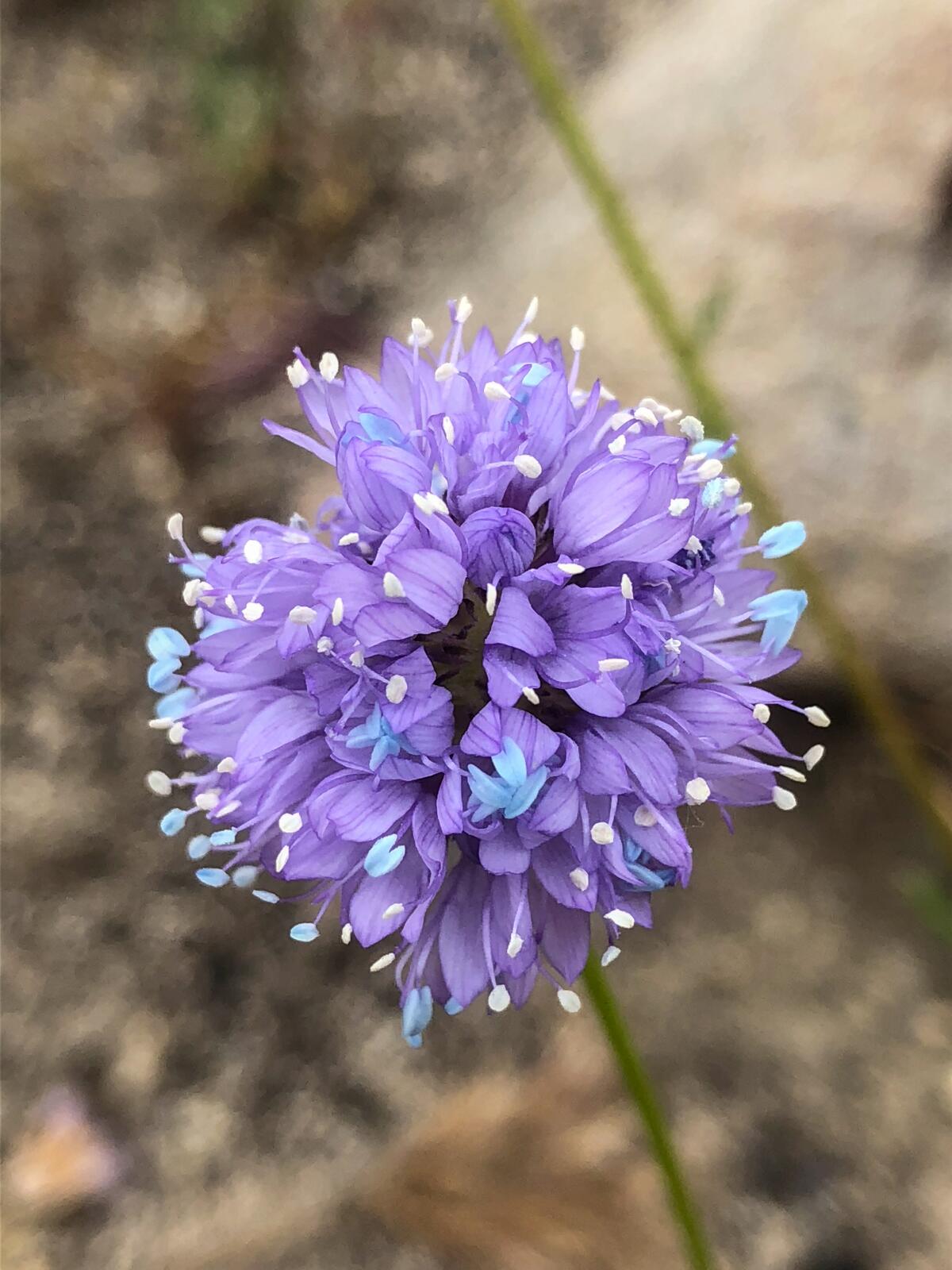
“The important thing is don’t cultivate during or right after a heavy rainstorm,” Becker said. “Go get your seeds and wait a week or so until upper few inches of the soil has drained out a bit.”
One tip: If you’ve just removed your lawn and recently planted some perennial native or drought-tolerant plants, instead of mulching around the new plants, plant wildflowers to act as mulch during the winter, and then add your wood-based mulch in the spring, after they bloom.
3. Remove any weed sprouts
Invasive weeds are big competition for wildflowers, easily outpacing and crowding them out, so here is where your hula hoe can come in handy, just slicing off emerging weeds at the ground so the wildflowers have a fighting chance. You can also hand pull the weeds, whichever is easiest. Just remember that the more weeds you leave in the ground, the less space, sun and nutrients your flowers will have to grow.
4. Size up your planting area
Find out the size of the area you want to plant, and then read your seed packets to see how much area one packet will cover. Be sure you’re buying enough seed for the area you want to plant.
California native plants have many pros, but their potent scents are the biggest draw of all. Gardening experts share the most fragrant native plants.
5. Mix your seeds with native soil
Fill a 5-gallon bucket about halfway with soil from the garden where you intend to plant and then use your hands to thoroughly mix in your packet or packets of seeds. Mixing the seeds with damp garden soil — “not overly wet or dry” — makes it easier to evenly scatter them around your growing area, Becker said. You can also use horticultural sand, but Becker prefers using the soil where the seeds will be growing. This technique is especially helpful for young children who want to help. “All you do is pick up handfuls from the bucket and start scattering them around,” he said. “It’s a fun activity to do with your kids.”
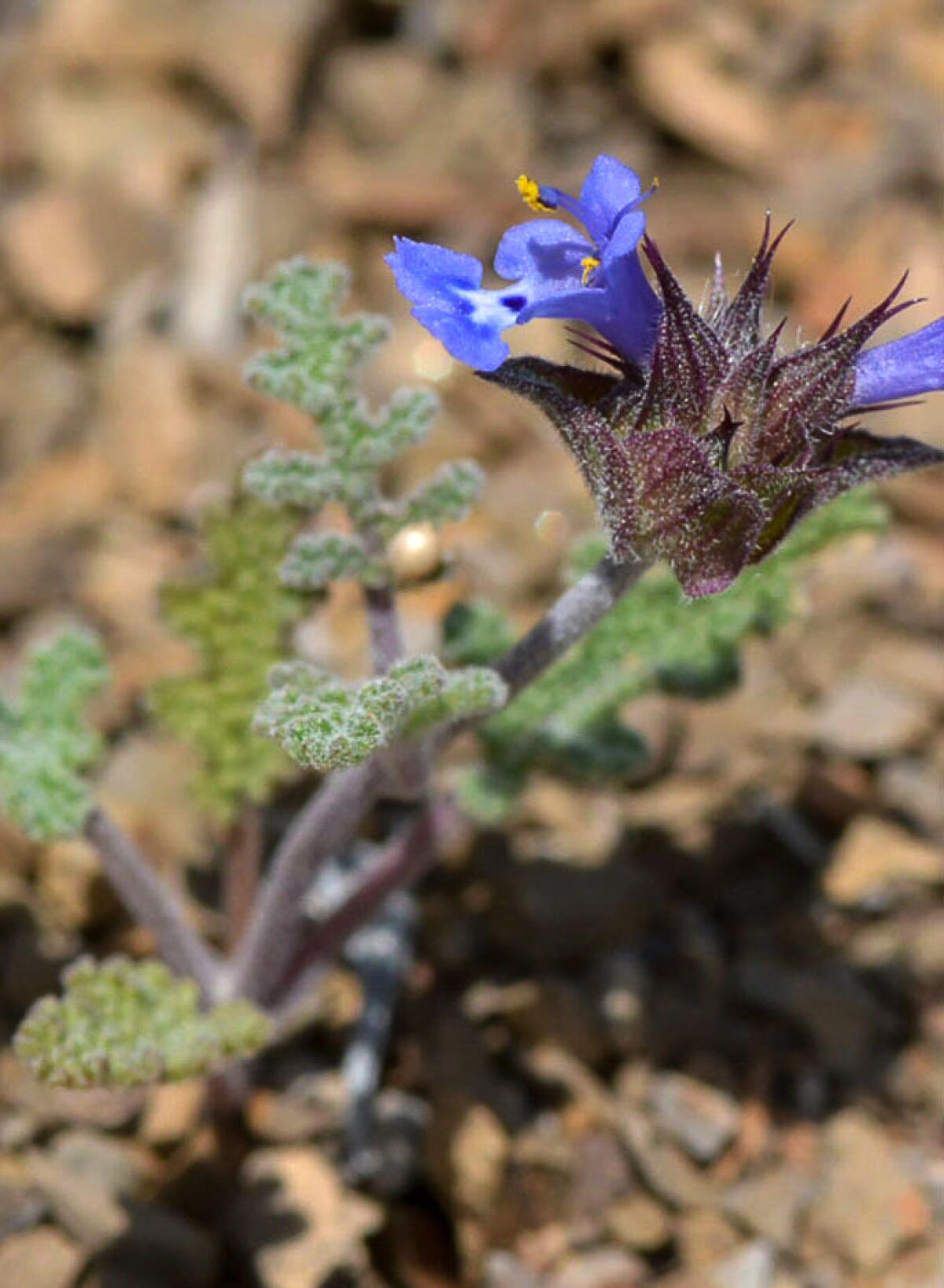
6. Lightly rake over the seeded area
After you sow the seeds, use a leaf rake to lightly “nest” the seeds into the soil. If rain is expected that evening or the next day, let the rainfall soak the seeds into the ground. If no rain is expected, use the shower nozzle on your hose and dampen the seeded area to help settle the seeds into the ground and start their germination, which typically takes about 10 to 14 days. Note: If you’re planting on a hillside, Becker said, you’ll need to work the seeds into the soil a little more to be sure they don’t wash away in the next rainfall.
7. Don’t kill your sprouts!
You want to keep weeds out of the seeded area, but you don’t want to remove emerging wildflowers. So if you’re not sure whether the sprout you see is a weed or wildflower, let it grow a while longer until you can identify what’s coming up. And be sure to tell your gardener or landscaper that you’ve planted wildflowers so they don’t weed up your hard work! Pro tip: If you have a lot of weeds in your garden, get some potting soil and grow a few of your wildflowers in a pot so you can more easily identify the emerging plants you want to keep, Becker said.
8. Planting in containers
Theodore Payne has a special wildflower mix for pots that calls for containers at least 12 to 14 inches wide and 6 inches deep, but Becker said you can plant wildflowers in any container at least 4 inches deep. “The bigger the container the more you can grow,” he said. Just be sure to use potting soil mixes with good drainage, such as soils designed for cactus and succulents. Remember, Becker said, the smaller the container, the more water it’s going to need because it will dry out faster. So in the case of planting wildflowers, the wider the container, the better.
January is a good month for garden classes and planning. We asked SoCal garden experts to weigh in on their personal garden goals in 2023.
You can also scatter wildflowers around a potted perennial, he said. “Wildflowers can be a living mulch in a garden or in a container.”
More to Read
Sign up for The Wild
We’ll help you find the best places to hike, bike and run, as well as the perfect silent spots for meditation and yoga.
You may occasionally receive promotional content from the Los Angeles Times.
